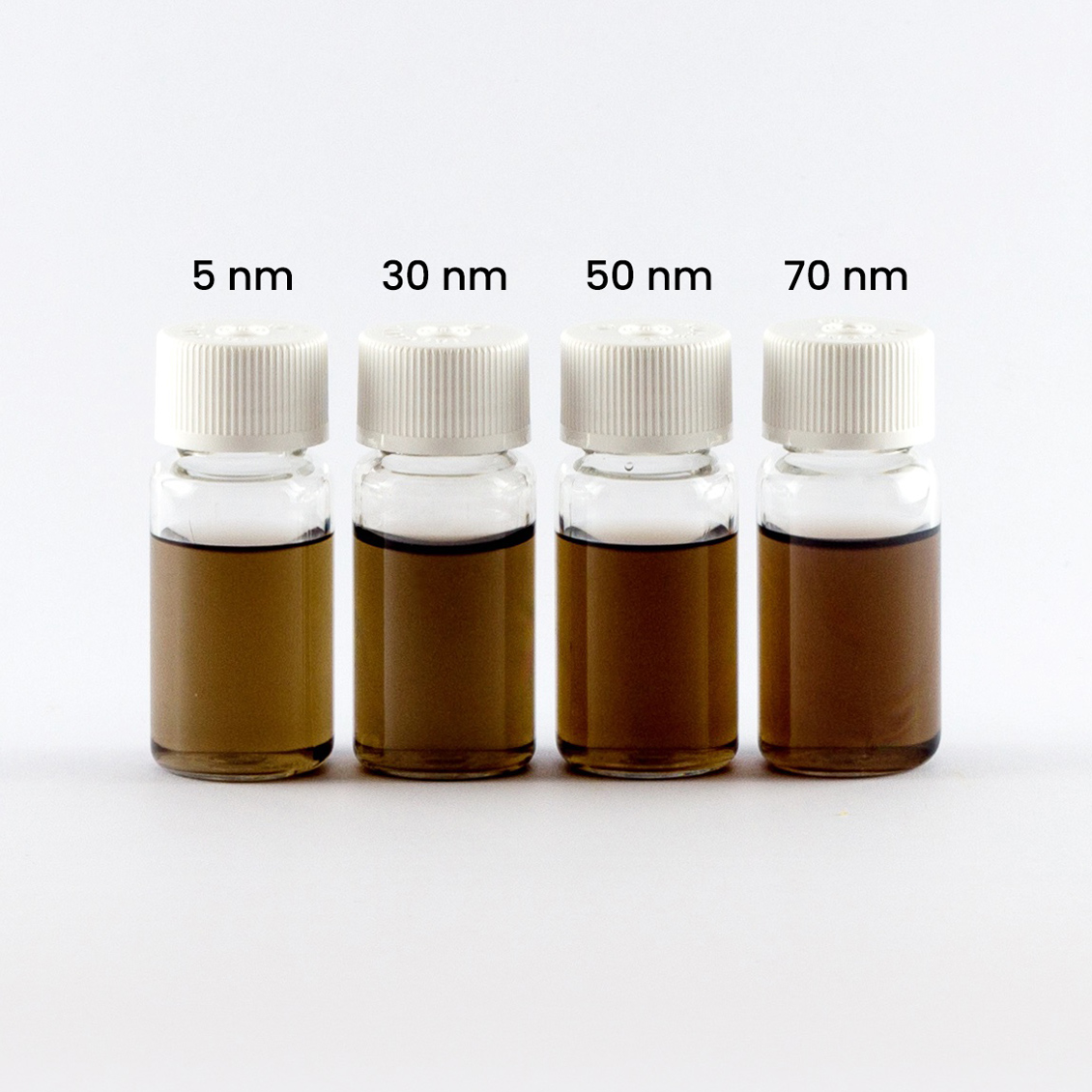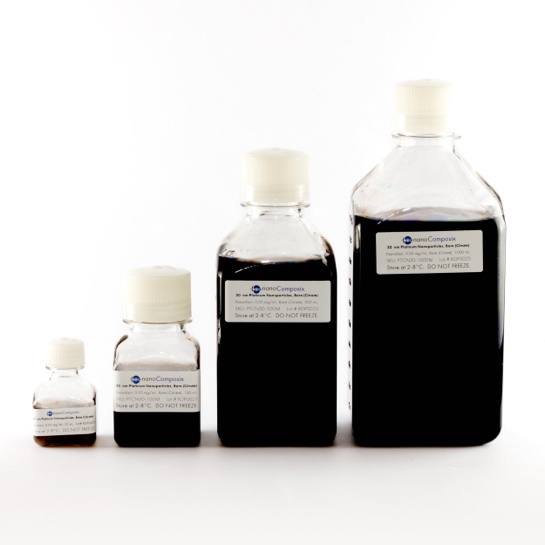Platinum Nanoparticles
Platinum nanoparticles (PtNPs) are used in a variety of applications, including diagnostics, catalysis, and Surface Enhanced Raman Spectroscopy. Platinum nanoparticles from Fortis have the following features:
- Diameters of 5, 30, 50 and 70 nm, with guaranteed CVs < 15% (CV < 20% for 5 nm spheres)
- TEM, UV-Vis, and DLS characterization data provided for every batch
- A citrate surface and are provided in a citrate buffer
Particle sizes up to 180 nm in diameter and custom surface functionalizations are available upon request.

Platinum Nanoparticle Applications
With recent advances in platinum nanotechnology, there is growing interest in platinum nanoparticles and their application to diagnostic and industrial applications, such as the use of electrochemical biosensors.
Catalysis
Catalysts are vital for the sustainable and efficient ways to convert chemicals and fuels from raw materials. Platinum nanoparticles continue to show some of the most promising results for efficiency and sustainability, with modern developments continually advancing this area of research.
Surface Enhanced Raman Spectroscopy
Until recently, platinum was considered a poor Raman enhancing material, but with the generation of large-sized platinum nanoparticles, it has since been found to be experimentally advantageous, even over common SERS metals like gold and silver.
Molecular Diagnostics
Due to the unique physicochemical properties of nanoparticles, they have been used extensively in biomedical applications, such as molecular imaging, implants and drug delivery systems.
More recently, they have been applied to biomedical applications such as nanomedicines and photothermal therapies.
Cancer treatment
Platinum nanoparticles have shown promise as a cancer treatment due to the pathways in which platinum ions can rapidly accumulate in tumors and damage the DNA of cancer cells, and have the potential to strongly improve cancer therapy protocols.
Why Purchase From Fortis Life Sciences?
Satisfaction Guaranteed
We stand behind everything we make 100%. If for any reason you are dissatisfied with the material you’ve received, we will do everything in our power to make it right.
Extensive Characterization Data
Each batch of gold nanoparticles is extensively characterized using techniques including transmission electron microscopy (TEM), dynamic light scattering (DLS), zeta potential, and UV-Visible spectroscopy. In addition to ensuring that every batch of nanoparticles meets our stringent quality control requirements, customers are provided with batch-specific specification sheets containing representative TEM images, sizing data, hydrodynamic diameter measurements, zeta potential analysis, UV-Visible spectrum, and solution pH.
Full Disclosure
Surface chemistry and suspension buffer details are provided for each material, and no proprietary coatings or mystery chemicals are used. Gold nanoparticle products are available with a citrate capping agent and can be customized upon request.
Aggregation Free
Due to their small size, low mass, and extremely high surface area:volume ratios, once nanoparticles bind together it is often impossible to separate them. At Fortis Life Sciences we have developed custom processing techniques that allow us to concentrate and purify nanoparticles without inducing agglomeration.
Synthesis & physical properties
At Fortis Life Science, platinum nanoparticles are synthesized by reducing platinum salt precursors in solution in the presence of a capping agent to generate colloidal nanoparticle suspensions. Control over the size of platinum nanoparticles can be achieved by changing the platinum salt precursor, by altering the ratio of ligand to precursor, and/or by adjusting the reaction temperature.
Generally platinum nanoparticles appear brown in color and low to medium concentrations. Highly concentrated suspensions appear very dark brown or nearly black in some cases.
Optical properties
The interesting optical properties exhibited by platinum nanoparticles are largely dominated by a surface plasmon resonance in the ultraviolet region of the electromagnetic spectrum. These signatures are uniquely positioned at higher energy (lower wavelength) than other common plasmonic nanoparticles including silver and gold. These unique characteristics make these materials useful to a range of industrial uses and novel applications.
Customer Service
Our nanoparticle chemists will address your technical questions and help you select the optimal nanomaterial for your application.
By clicking “Acknowledge”, you consent to our website's use of cookies to give you the most relevant experience by remembering your preferences and to analyze our website traffic.


